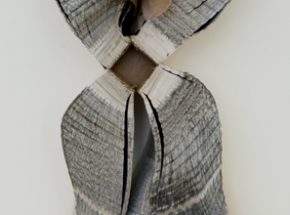

Griffith Jerome Davis was born in Roberts Hall on the campus of Morehouse College in Atlanta, Georgia on April 18, 1923. He attended Oglethorpe Laboratory Elementary School and Atlanta University Laboratory High School where instructor Bill Brown introduced him to photography. The camera became his primary means of expression and support during high school and college.
After serving in the 92d Infantry Division during World War II, Davis returned toAtlanta to resume his college career at Morehouse. The veteran “…re-established connections with the public relations departments and newspapers and for the first time started taking pictures and writing for magazines.” While still in school, Griff Davis shot for various publications including the Atlanta Daily World, Time and Ebony. “Ebony authorized me to do a picture-article of the North Carolina boarding school [Palmer Memorial Institute] where my sister completed high school. This was my first big break in photo-journalism. I felt rather proud because I had originated the idea and developed the entire six-page story.”
Dr. Martin Luther King, Jr. was a fellow Morehouse student in the mid 1940s and Langston Hughes was one of Davis’ principal professors who became a lifelong friend and significant influence in his life. “Langston did not teach me how to write. His spirit taught me how to write,” said Davis. “I learned a lot by being associated with him like hanging around the corner drugstore (Yates and Milton) near campus. There was no strong formality with him. Just him talking off the top of his head and coming up with off the wall ideas…like our joint story on Atlanta in Ebony. We wrote about things that needed to be said about Atlanta that were not being said.”
After graduating from Columbia University, Griff Davis worked as a photo-journalist for Black Star, a New York stock photo agency, from 1949 to 1952. As a freelance photo-journalist for Black Star and a stringer for the New York Times, he photographed and wrote extensively in Africa, Europe, and the United States. His work appeared in such various publications as Der Speigel, Ebony, Fortune, Modern Photography, Negro Digest, Steelways and Time.
In the early 1950s, Griff Davis and fellow Morehouse alumni, John W. Davis and Robert Kitchen joined the U.S. Foreign Service, becoming pioneers of President Harry Truman’s Point 4 program for foreign aid, the forerunner of the present-day United States Agency for International Development (USAID). Their efforts in Liberia helped to establish the Point 4 program worldwide.
Griff Davis worked in many capacities in the Foreign Service for USAID from 1952 to 1985. He served in Liberia, Tunisia, and Nigeria before returning to the States to assume direction of the Information, Education, and Communications branch of the Office of Population at USAID headquarters in Washington, D.C. Griffith Davis retired from the US government in 1985.
On February 20, 1993, Morehouse College awarded Griff Davis the Bennie Trailblazer Award for personal and professional achievements at the Fifth Annual Bennie and Candle Awards Ceremony in Atlanta. The Bennie Award is named after Dr. Benjamin E. Mays, president emeritus of Morehouse College.
Website
http://www.griffdavis.com


